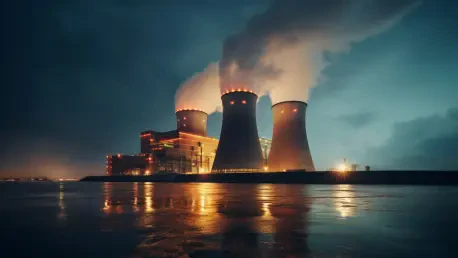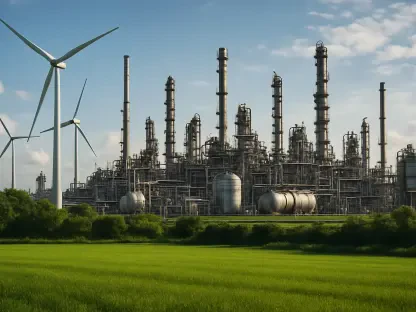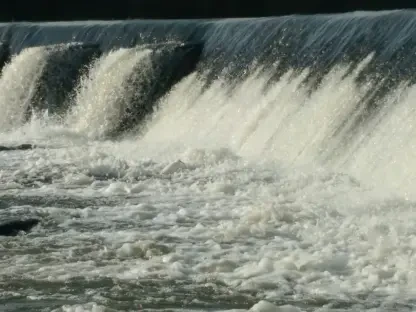The energy landscape in Idaho is undergoing one of its most significant transformations. In a bold move that has stirred both curiosity and debate, Idaho is shifting from wind power plans to exploring the realm of nuclear energy, positioning the state at the forefront of a nationwide energy transition conversation.
Once touted as a cornerstone of Idaho’s sustainable future, wind power is facing substantial competition from emerging nuclear technologies. With potential advantages in efficiency and land usage, nuclear power presents a fresh solution to Idaho’s energy challenges. However, the shift from renewable wind farms to nuclear facilities is not without its hurdles. Stakeholders are keenly observing whether Idaho’s pivot will pave the way for broader acceptance of nuclear power or if it will highlight the hurdles and delays associated with such a transition.
Navigating A Historical Shift
The Lava Ridge wind farm was initially conceived as a large-scale renewable project in Southern Idaho’s quest for sustainable energy. Nevertheless, political shifts at the national level and increasing local opposition led to its abandonment. Former President Trump’s administration played a pivotal role in halting this project, reflecting geopolitical and environmental recalibrations. This strategic pause paved the way for a reconsideration of energy strategies, allowing nuclear proposals to surface as viable alternatives.
Southern Idaho’s transition from planned wind power towards nuclear energy is not merely a result of political dynamics. It is an amalgamation of aspiring to meet energy demands while addressing environmental concerns publicly highlighted by the Lava Ridge project. This evolving narrative underscores the complex interplay between policy, technology, and environmental stewardship.
Unveiling the Midpoint Project
Enter the Midpoint Small Modular Reactor Project, an ambitious proposal by Sawtooth Energy and Development to build a 462-megawatt nuclear power facility. Occupying the same site once envisioned for the Lava Ridge wind farm, the project seeks to implement NuScale’s modular reactor technology across six sites, each with a capacity of 77 megawatts. Spanning a development size of 320 acres under Bureau of Land Management oversight, it represents a groundbreaking effort for Idaho’s energy sector.
With Idaho Power’s existing Midpoint substation’s grid connectivity on the horizon, Sawtooth has charted a path toward rapid realization. Recent federal measures have shortened nuclear project timelines, with projected completion in approximately two years. This potential acceleration hinges on strategic environmental assessments and regulatory processes alignment. Should the proposal advance as expected, Idaho may witness a benchmark transformation in atomic energy deployment within its borders.
Expert Insights: Charting a Nuclear Course
Industry leaders and experts like Dan Adamson offer key insights into Idaho’s nuclear journey. Adamson, representing Sawtooth, highlights the value of capitalizing on prior groundwork from the wind project while emphasizing the necessity for seamless regulatory navigation. NuScale, while not in formal collaboration with Sawtooth, provides a model technology with certified designs conducive to expedited approval once formal submissions begin.
Research into small modular reactors indicates they offer improved safety protocols and reduced construction times. Yet challenges such as community apprehension about nuclear technology remain prevalent. Balancing the potential electricity generation benefits with societal and environmental considerations proves crucial in gaining public trust and achieving project goals.
Guide for Idaho’s Stakeholders
Practical strategies need careful consideration as Idaho embarks on this nuclear initiative. For residents, businesses, and policymakers, a comprehensive framework to engage with these developments is essential. Environmental impact reports and regulatory compliance must be addressed meticulously to ensure transparency and community support.
Engagement processes could involve dialogues and consultations to address potential concerns and underscore safety measures. Policymakers will require insightful analyses and data-driven decisions, fostering mutually beneficial relationships between stakeholders and project developers.
Looking Ahead
Idaho’s strategic shift from wind to nuclear assumes a pioneering role in energy innovation. As Southern Idaho navigates the complex terrain of energy reform, the pursuit of nuclear power represents a deliberate step into uncharted areas. This journey illustrates the balance between emerging technology’s promise and the importance of addressing stakeholders’ concerns.
In the unfolding narrative of Idaho’s energy story, stakeholders recognize the need for sustainable solutions and introduce modular nuclear projects. These projects symbolize a novel approach to energy security and environmental responsibility, setting a precedent for other regions considering similar transformations.









